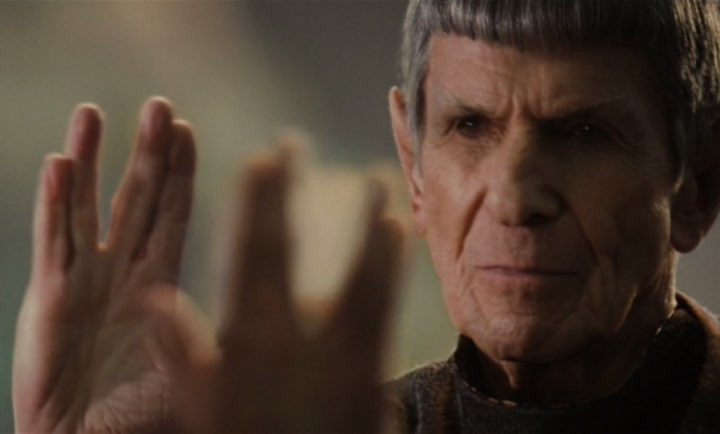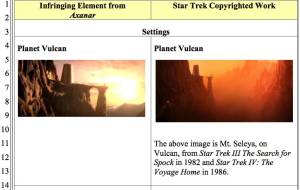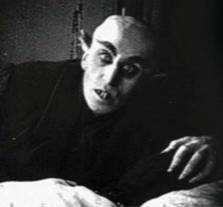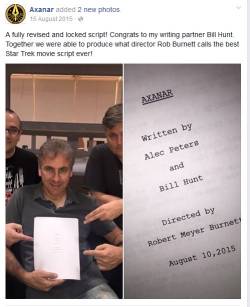
JUDGE DENIES defense motion to dismiss, citing Vulcan philosophy to state plaintiffs’ infringement case will ‘live long’ enough to seek to ‘prosper’ in court.
Motions to Dismiss
Table of Contents
See also: Plaintiffs oppose dismissal motion
CASE STATUS January 20, 2017 Axanar settles its copyright infringement lawsuit, admitting it overreached; both sides file for dismissal of the case in U.S. District Court. || January 9 Judge holds final pre-trial conference with attorneys for both sides to set final terms for trial — also a last-ditch effort at settlement || January 4 Judge throws out Axanar’s fair use defense || Up-to-the-minute news and views on Twitter @AxaMonitor
Winston & Strawn, representing Alec Peters and Axanar Productions, filed a new Motion to Dismiss the copyright infringement lawsuit brought against them by CBS and Paramount Pictures.
LAWSUIT PRIMER Get an overview of the copyright lawsuit, including a timeline of the case, as well as downloadable pleadings made by the plaintiffs, CBS and Paramount, and defendants Alec Peters and Axanar Productions Inc. » Lawsuit Primer
‘Trying to dismiss a meritorious legal complaint may not be worth the price of the defense’s credibility with the judge. ’ — Business and Commercial Litigation in the Federal Courts
The new motion was filed Monday, March 28, 2016 — three days before the defendants’ Answer to plaintiffs’ amended complaint was due March 31. The filings in U.S. District Court ask Judge R. Gary Klausner to strike portions of the suit, or dismiss it outright.
According to the PacerMonitor website, Axanar attorneys Winston & Strawn asked for a hearing May 9 before Klausner, a hearing he canceled, citing sufficient arguments made in legal pleadings.1)
Dismissal Denied
In a sweeping rejection of arguments made by Axanar’s lawyers, a federal judge on May 9, 2016, denied the pending motion to dismiss and ordered the copyright infringement lawsuit should move forward.
DOWNLOAD the judge's order denying the defense motion to dismiss the copyright infringement lawsuit against Axanar Productions and Alec Peters.
The eight-page “civil minutes” published by the court denied each point of law Axanar’s attorney, Erin Ranahan, asserted in the pending dismissal motion.
In issuing the order, Klausner included a sly reference to Vulcan philosophy:
Although the Court declines to address whether Plaintiffs’ Claims will prosper at this time, the Court does find Plaintiffs’ claims will live long enough to survive Defendants’ Motion to Dismiss. For the foregoing reasons, the Court DENIES Defendants’ Motion to Dismiss. IT IS SO ORDERED.2)
With the dismissal motion disposed of, the case proceeded forward to an expected filing by Axanar’s law firm, Winston & Strawn of its answer to the legal complaint on or before May 25, 14 days after the judge’s ruling.
Also planned for May 9 was a scheduling conference for the two sides to discuss possible settlement talks, and their plans for conducting discovery for the case.
Opening Strategy
A motion to dismiss is a common opening strategy by defense attorneys to ensure the legal complaint is technically correct. Judges, however, only rarely grant dismissals, and it can be a risky move. Trying to dismiss what a judge can see is a fundamentally meritorious legal complaint may not be worth the price of the motion and of the defense’s credibility with the judge.3)
In this case, the defense filed what is substantially the same motion to dismiss that Judge Klausner found moot because of the amended complaint. Klausner has already demonstrated his propensity to keep this case moving along.4)
Dismissal Motion & Judge's Denial
DOWNLOAD the entire new Motion to Dismiss (39 pp., 160K PDF)
The motion was filed instead of an Answer to the amended March 11, 2016, complaint, in which the defendants would normally outline their case against the suit. Winston’s lead attorney, Erin Ranahan, cited several problems with the amended complaint, each of which was rejected by the judge.
‘Although it is unclear whether Defendants stand to earn a profit from the Axanar Works, realizing a profit is irrelevant to this analysis. ’ — Federal Judge R. Gary Klausner
- Elements not protected by copyright. “The amended allegations go beyond the plausible realm of copyright protection,” the motion states. Such elements without protection include clothing, colors, shapes, words, short phrases, works derived from nature, public domain and third-party works, the Klingon language, scènes à faire, certain characters, and ideas—including the “mood and theme” of scifi. Judge Klausner rejected this argument:
When viewed in a vacuum, each of these elements may not individually be protectable by copyright. Plaintiffs, however, do not seek to enforce their copyright in each of these elements individually. … The Court finds it unnecessary to analyze whether the allegedly non-protectable elements of the Star Trek Copyrighted Works are eligible for copyright protection because Plaintiff describes these elements in the Complaint solely in an effort to demonstrate how the Axanar Works are substantially similar to the Star Trek Copyrighted Works.5)
In the United States, the French term scènes à faire refers to certain elements of a creative work not protected by copyright law when they are mandated by or customary to the genre.
- Allegations not specific enough. Even if the alleged infringing elements were protected, the defense asserts the violations aren’t sufficiently specific. “While Plaintiffs allege that they own ‘more than 700’ Star Trek television episodes, a dozen motion pictures, and four books, they still fail to specify which of those copyrights Defendants have allegedly infringed.” The judge disagreed:
Plaintiffs [went] to great lengths to compare and contrast allegedly infringing elements of the Star Trek franchise through photographs and vivid descriptions. … The Court finds the Complaint sufficiently provides Defendants notice of the allegedly infringing elements at issue. For example, Plaintiffs allege that the Starship U.S.S. Enterprise, which first appears in the pilot episodes of The Original Series and is consistently portrayed throughout the franchise’s episodes and films, appears in Defendants’ Prelude to Axanar.6)
- Who owns which copyrights? The motion repeats the claim from the first dismissal motion that each Plaintiff’s standing is unclear since CBS and Paramount Pictures each claim to own different works, resulting in exaggerated exposure for the defendants for statutory damages, and asserts Paramount may have no standing in the case.7) The judge did not find a problem with Paramount’s or CBS’ standing to bring a copyright infringement claim or the need to examine individual copyrighted elements so closely:
To demonstrate substantial similarity, Plaintiffs describe individual infringing elements in the Complaint. … However, Plaintiffs do not claim that these individual infringing elements are subject to copyright protection – these elements are included in the Complaint to demonstrate the similarities between the Star Trek Copyrighted Works and the Axanar Works. Because it is undisputed that Paramount owns the copyrights to the Star Trek Motion Pictures, which is included in the Star Trek Copyrighted Works, Paramount has standing to sue for copyright infringement based on these works.8) [emphasis added]
- Unfair to bundle the completed short film, Prelude to Axanar, (which the motion continues to characterize as a “mockumentary”) with the unproduced feature film, Axanar. Prelude deserves its own defense under fair use, minimal infringement and “lack of substantial similarity,” the motion states.
The judge, however, rejected the use of Axanar‘s status as unproduced to separate the “Axanar Works” in two:
The Court finds it plausible that Defendants have completed a final script of the Axanar Motion Picture. The Court will be able to analyze substantial similarity based on the script and the already disseminated Vulcan Scene. An infringing work, is “fixed in a tangible medium of expression when its embodiment in a copy … is sufficiently permanent or stable to permit it to be perceived, reproduced, or otherwise communicated for a period of more than transitory duration. … When the work is ‘prepared over a period of time, the portion of it that has been fixed at any particular time constitutes the work as of that time.’”9)
- Unripe fruit. The Axanar film cannot be held accountable for copyright infringement because it has not yet been made. The judge similarly dismissed this argument:
Because Plaintiffs have sufficiently alleged Defendants created the Vulcan Scene as well as a “final and locked script,” the Court finds that Plaintiffs’ claims based on the Axanar Motion Picture are ripe for adjudication.10)
- Prior restraint. Because Axanar has not been made, any attempt to halt production, would constitute censorship. Instead, the judge found that without a motion for a preliminary injunction, this argument wasn’t persuasive:
This argument is unavailing. … Defendants are not restrained by the filing of this Complaint. Rather, Defendants are on notice that Plaintiffs allege certain copyright infringement allegations against them. This ruling does not affect Defendants choice to proceed with the production of the Axanar Motion Picture.11)
Troubled Copyright Claims
Even among plaintiffs’ factual statements made in the amended complaint, the dismissal motion cites problems:
- Plaintiffs do not explain how the chain of title conferred which rights in the Star Trek Copyrighted Works to which respective Plaintiff. The defense repeated this in the first dismissal motion.
- The Star Trek copyrighted works “do not all contain the same characters, starships, plots, and other features.” Also repeated from the earlier motion, this version doesn’t explain how the Star Trek variations dilute or dissolve the plaintiffs’ copyright protections.
- Plaintiffs failed to include the upcoming feature film, Star Trek Beyond (due in 2016), and the new 2017 television series among the allegedly infringed “Star Trek Copyrighted Works.”
Specificity

The defense returns to the same argument it made in its original dismissal motion about the lack of specificity of the copyright violations — namely that plaintiffs must draw a line from each specific infringed work to the infringing element in the Axanar works.
The motion even goes so far as to assert that Paramount Pictures should not be a party to the suit:
Paramount may not belong in this case at all if the allegedly “infringing elements” first appeared in CBS’s alleged works.13)
Also, the defense claims the lack of specificity prevents the defendants from proving Prelude to Axanar did not infringe.
Courts have time and again expressly rejected this approach [requiring] defendants to sift through each movie and television episode to attempt to determine what Plaintiffs’ claims are.14)
Filtering Out
The motion asserts that much of what the amended complaint offers as copyrighted elements are too general to be protected and should be “filtered out” from the plaintiff’s alleged copyright violations. Among those elements:
Costumes
The costumes in the complaint — gold shirts, cowl necks, green drapes, and robes15) — can’t be copyrighted because they are “useful articles”; clothing cannot be copyrighted except to the extent there are original designs on the clothing that can be separated from the function of the clothing.
The medals and Starfleet insignia are similarly not protected, according to the motion, based as they are on common geometrical shapes.
Words and Phrases
The motion identifies several words and short phrases, including names, it asserts are also not copyrightable, including Garth of Izar, Soval, Richard Robau, and John Gill.
Other non-protectable words cited in the complaint include: Andorians, Tellarites, Romulans, Axanar, Archanis IV, Q’onoS, Nausicaa, Rigel, Andoria, Tellar Prime, Vulcans, Klingons, Terra (land), Starship Enterprise, Starfleet, Federation, Starships, Stardate and Federation, or the short phrase “beaming up.”
Unprotected Works
The motion asserts that works derived from nature, public domain or third-party works are not protected. Among them:

- Vulcans’ appearance is no different from many fantasy works predating Star Trek, including vampires, elves, fairies, and werewolves, as well as in many animals in nature.
- The name Vulcan which is drawn from Roman mythology.
- Triangular medals on uniforms have been used by military, religious and other organizations throughout history.
- Nausicaa is a character in Homer’s Odyssey.
- Rigel is the name of a star in the constellation Orion.
- Terra is the Latin word for “land.”
- The Federation logo is adapted from the United Nations flag.
- Transporters have existed in science fiction since 1877.
- Warp drive has existed in science fiction as early as 1945.
- Federation is the general word to describe a country formed by separate states that have given certain powers to a central government while keeping control over local matters. The concept is commonly used in science fiction and is inspired by the United Nations.
- Phasers are also known as Heat-Ray weapons, which have existed in science fiction since H.G. Wells’ “War of the Worlds” in 1898.
- Bridge is a naval term for a ship’s command center. Its first usage predates the 12th century.
Minor Characters
The motion cites case law that “characters that have been ‘lightly sketched’ and lack descriptions may not merit copyright protection.” contrasting copyright-protected characters like James Bond, Batman, and Godzilla with what the defense asserts are not sufficiently delineated characters like Garth of Izar, Soval, Richard Robau, John Gill, Captain Robert April, Chang or Sarek.
‘Star Trek like you’ve never seen it before. ’ — Defense says this Kickstarter slogan contradicts allegations of Axanar’s substantial similarity to copyrighted Star Trek
However, the Lizerbram Law Blog thinks arguments reducing the Star Trek copyright to the costumes, words and minor characters is missing the forest for the trees:
Unfortunately for Axanar, it’s unlikely that this argument will be successful. Based on a brief review of Prelude to Axanar, it’s clear that the costumes, sets, makeup, and spaceship design are all intended to suggest that they’re part of the Star Trek universe.17) [emphasis added]
Also, the motion calls into question the validity of the plaintiffs’ copyright claims because it is not clear which plaintiff owns which copyrights. In an interview with Fox News, Attorney Ranahan said:
We are seeking specifics on what copyrights CBS/Paramount alleges have been infringed, and which plaintiff claims to own which of those copyrights.18)
The Lizerbram Law Blog calls this, at worst, a minor technicality, easily rectified:
It would take a truly novel theory of copyright to suggest that Prelude to Axanar (or, most likely, the forthcoming Axanar) is not an unauthorized derivative work of the original Star Trek copyright. Paramount may simply need to draw a more direct connection between the protectable elements of particular films and episodes and the allegedly infringing works. But that’s more a matter of paperwork than a fundamental flaw in Paramount’s case.19) [emphasis added]
‘Unripe Fruit’
The motion argues that until Axanar is complete, in “fixed, tangible form” it cannot be judged for any copyright infringement. Ranahan told Fox News:
We are also challenging whether it is premature to claim infringement on a movie that is not done, and in fact, the script is being reworked in light of the lawsuit.20)
The motion itself states so:
Indeed, there are multiple versions of the script, and the script is still being revised and re-written. Under these circumstances, the Court should not permit Plaintiffs to proceed with their copyright claims to the extent they are based on the Potential Fan Film itself.21)
Fair Use Defense
In fact, the dismissal motion appears to be setting up an eventual fair use defense on this basis:
To the extent any of the elements Plaintiffs are complaining about are actually protectable, Defendants intend to vigorously defend their use (if any) as a fair use. Without a film, the Court cannot evaluate the purpose and character of Defendants’ film, whether its nature is transformative or a parody, and the amount and substantiality taken (if any).
Under U.S. copyright law, these are three of the four factors courts must weigh when determining whether infringement constitutes fair use.22)
The defense omits the most important factor in determining fair use. Notably, the motion omits the fourth factor: commercial impact of the infringing use, which the Supreme Court ruled “is the single most important element of fair use,”23) and “must take account not only of harm to the original but also of harm to the market for derivative works.”24)
Interestingly, the first motion to dismiss supported its ‘unripe fruit’ claim by asserting Axanar had no finished script, storyboard, reels and other preproduction materials on which to judge whether it was infringing or exercising fair use citing a case, Walt Disney Productions v. Filmation Associates.25)
However, Axanar has publicly released many photographs or videos of a finished script, storyboards and other preproduction materials. Neither the Filmation case nor the claim of no preproduction materials appears in the second dismissal motion. Instead, it focuses largely on the script undergoing rewrites and its reliance on Star Trek elements the defense claims cannot be protected under copyright.26)
The unfinished nature of the script is at odds with Axanar’s claim it was ready to begin shooting in January or February 2016:
- August 2015: The screenplay was “fully revised and locked.”27)
- December 2015: “… with a locked script finally in …” 28)
The current rewrites “in light of the lawsuit”29) may indicate the defendants acknowledge the script contained infringing elements, necessitating rewrites.
Lack of Harm
The motion says the lawsuit fails to demonstrate how CBS and Paramount have been harmed by Axanar, pointing to the free distribution of Prelude to Axanar and the fact no DVDs were sold, and that Axanar was always planned to earn no profit, distributed for free online.
Direct Financial Benefit
Also, the complaint failed to provide any specifics about what "direct financial benefit" Axanar or Peters received from the project, the motion asserts.
However, in denying the motion, Judge Klausner found sufficient cause to proceed with the plaintiffs’ claims of the defendants’ gaining direct financial benefit from Axanar:
Although it is unclear whether Defendants stand to earn a profit from the Axanar Works, realizing a profit is irrelevant to this analysis. The Court can easily infer that by raising $1 million to produce the Axanar Works and disseminating the Axanar Works on Youtube.com, the allegedly infringing material “acts as a ‘draw’ for customers” to watch Defendants’ films.30) [emphasis added]
Censorship
The motion stakes a big part of its argument on the fact Axanar remains unproduced, claiming that any injunction sought by the plaintiffs would be an unconstitutional “prior restraint” — preventing expression before it even occurs.
That argument failed to convince the judge, who wrote:
This argument is unavailing. Plaintiffs have not yet filed a motion for injunctive relief and Defendants are not restrained by the filing of this Complaint. Rather, Defendants are on notice that Plaintiffs allege certain copyright infringement allegations against them. This ruling does not affect Defendants choice to proceed with the production of the Axanar Motion Picture.31)
First Motion to Dismiss
The first motion [147 pp., PDF download] was filed February 22, 2016. On February 29, CBS and Paramount did not file a brief opposing the motion, instead opting to amend its legal complaint.32)
On March 15, the judge ruled the dismissal motion was moot after the plaintiffs filed their amended complaint. That put the case on track for a May 9 scheduling conference ordered by Judge Klausner.
Further Reading
- In the journal, The Practical Litigator, attorney Edna Sussman, author of “All About Motions To Dismiss: Motions to dismiss can be big winners—or big losers,” writes:
The essential prerequisite for a successful motion for judgment on the pleadings … by the defendant is that there be no triable issue of any fact material to the motion. This is the first question that the court will consider, and if there is a material fact in dispute, the case will proceed toward trial.33) [emphasis added]
Keywords

